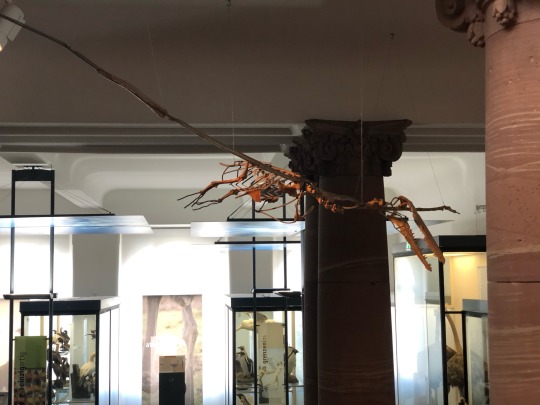#odontopterygiform
Text

Yesterday, an earthquake shook the narrow coastal lands between the Atlantic Ocean to the west and the great dry abyss to the east. A landslide allowed the water to break through the narrow strip of high land and begin flooding in. The incredible power of the ocean violently widened the gap and eroded the lowlands beyond, creating an ever growing chasm and the biggest waterfall on the planet by the next day.
With the very ground under their feet unsure and brittle and the sea rushing in ever faster, some of the local animals have fled to the top of a large nearby rock outcropping that will one day be named Gibraltar. The only ones who don't seem disturbed are the Pelagornis and other sea birds, who have discovered some aerial acrobatics let them catch the fish being swept up in the flood. Though even for a bird the size of Pelagornis, an unfortunate humpback whale is way too big of a catch.
The vast, dry salt plains beyond continue much further than any of the watching animals can imagine, yet a thousand Amazons worth of water will fill up the abyss within a year or two. In the process, the Mediterranean Sea, which had dried up completely a million years before, will be reborn.
#neogene#pliocene#zanclean flood#pelagornis#gerbil#mouse#wall lizard#macaque#humpback whale#Odontopterygiform#bird#rodent#primate#mammal#flood#gibraltar#my art#paleoart#palaeoblr#miocene#messinian salinity crisis#according to some definitions this would be the second day of the pliocene#i have not been to gibraltar myself so i had to rely on google earth for references of the view of the other side#cw: animal death
94 notes
·
View notes
Text

Pelagornis, a pseudotooth bird from the Miocene.
6 notes
·
View notes
Photo

Weird Heads Month #29: Giant Saw-Toothed Birds
The pelagornithids, or "pseudotooth birds", were a group of large seabirds that were found around the world for almost the entire Cenozoic, existing for at least 60 million years and only going completely extinct just 2.5 million years ago.
Their evolutionary relationships are uncertain and in the past they've been considered as relatives of pelicaniformes, albatrosses and petrels, or storks, but more recently they've been proposed to have been closer related to ducks and geese instead.
Whatever they were, they were some of the largest birds to ever fly, and many of the "smaller" species still had wingspans comparable to the largest modern flying birds.
But their most notable feature was their beaks. Although at first glance they look like they were lined with pointy teeth, these structures were actually outgrowths of their jaw bones covered with keratinous beak tissue. While these bony spikes would have been useful for holding onto slippery aquatic animals like fish and squid, they were actually hollow and relatively fragile so pelagornithids must have mainly caught smaller prey that couldn't thrash around hard enough to break anything.
The serrations also only developed towards full maturity, and the "toothless" juveniles may have had a completely different ecology to adults.
Pelagornis chilensis here was one of the larger species of pelagornithid, with a wingspan of 5-6m (16'4"-19'8"), known from the western and northern coasts of South America during the late Miocene about 11-5 million years ago.
Like other pelagornithids it was highly adapted for albatross-like dynamic soaring, with long narrow wings that allowed it to travel huge distances while expending very little energy – but with its proportionally short legs it would have been clumsy on the ground and probably spent the vast majority of its life on the wing, only returning to land to breed.

———
Nix Illustration | Tumblr | Pillowfort | Twitter | Patreon
#weird heads 2020#science illustration#paleontology#paleoart#palaeoblr#pelagornis#pelagornithidae#pseudotooth bird#odontopterygiformes#galloanserae#bird#dinosaur#art#an odd duck#maybe#it's a lovely morning in the miocene and you are a horrible pelagornithid#deliberately visually emphasizing the duckishness because i haven't seen anyone actually do that with these guys
142 notes
·
View notes